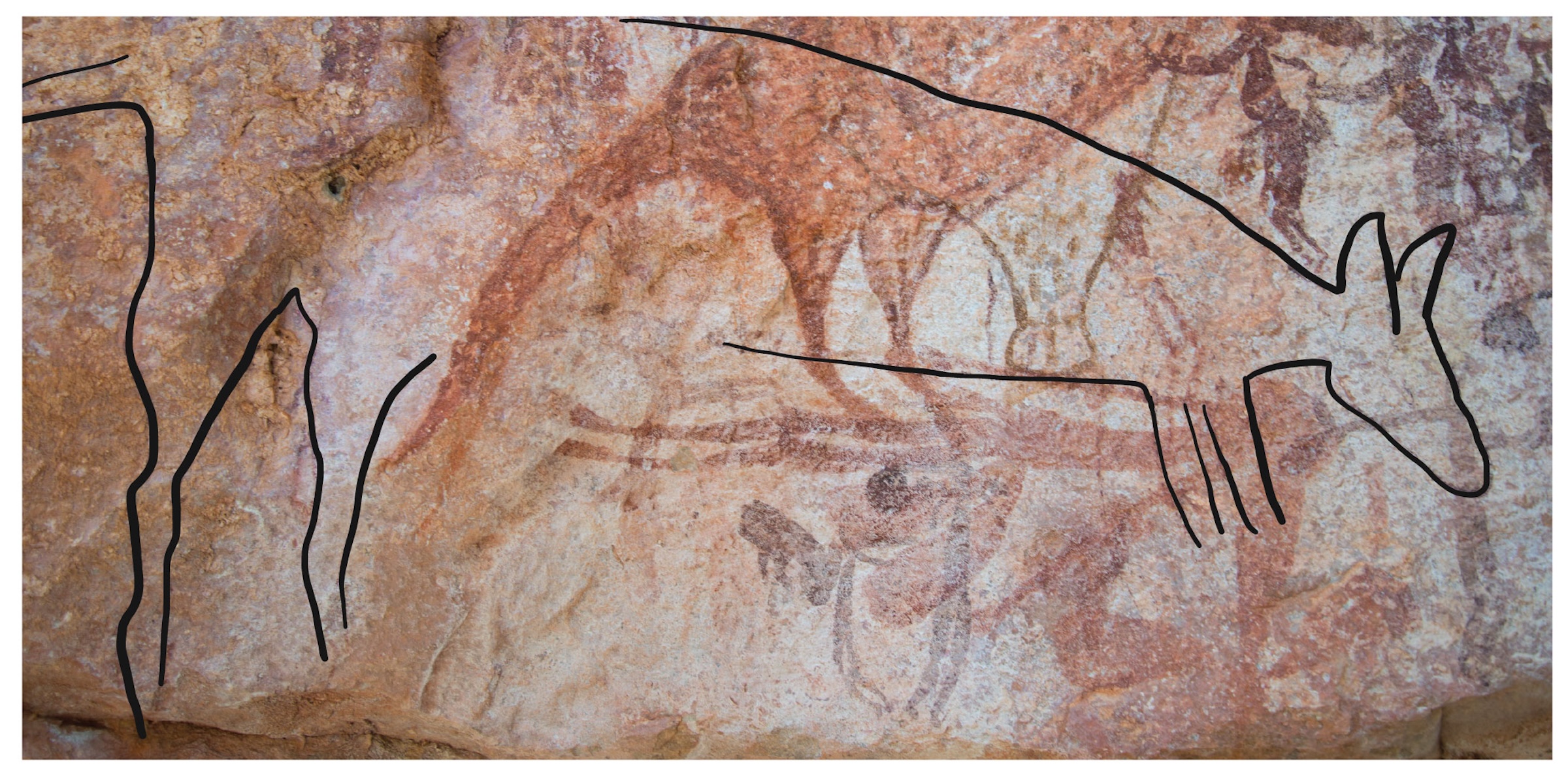Archaeologists in Australia have identified a new Aboriginal rock art style in the country’s western territory that dates back to the mid-to-late Holocene age, around 7,000 to 5,000 years ago.
In a study published by the journal Australian Archaeology in February, researchers proposed that zoomorphic rock paintings found in the Kimberley region should be classified as a new type of ancient Aboriginal art dubbed Linear Naturalistic Figures (LNF). The ancient works had previously been grouped with the Irregular Infill Animal Period (IIAP), Australia’s oldest known rock art style that dates back 17,500 years.
Led by postdoctoral researcher Ana Paula Motta and her colleagues at the University of Western Australia, the study was conducted in collaboration with the Balanggarra Aboriginal Corporation, the authoritative body that manages land across northeast Kimberley on behalf of the Balanggarra People.
The researchers assessed 151 rock art sites featuring more than 4,200 motifs, including paintings previously categorized as IIAP. Archaeologists found that 98 of these IIAP motifs contained characteristics inconsistent with the rock art style’s conventions, leading them to argue that the works should be categorized under LNF.

“The motifs showed a superficial visual resemblance to IIAP such as often being large (>80 cm) and having a ‘naturalistic’ mode of depiction, especially in the case of macropods,” researchers wrote.
“However, the LNF macropods are painted with a solid linear outline and partial to no infill,” they continued, adding that the majority of the figures were painted in dark or light red. By contrast, IIAP rock art is characterized by macropod motifs with a solid infill, usually done in mulberry-colored paint.
The researchers also noticed that the LNF rock art almost exclusively consisted of animal forms. Most of the motifs depicted macropod mammals like kangaroos and wallabies, although they also featured fish, reptiles, birds, and other unidentified figures.
The works were located in 22 sites spanning rock walls, ceilings, and ledges in the Drysdale River Catchment and King George River Catchment. Motta told Hyperallergic that the former location had a “higher concentration” of LNF figures.
“Figures similar to the LNF have also been reported toward the Kimberley’s coastal catchments,” Motta added.
The LNF were also chronologically sequenced between Gwion Gwion rock art, which dates back more than 10,000 years and features human figures in ornamental attire, and Wandjina rock art, which can be traced to around 4,000 years ago and typically depicts spiritual ancestors and animal motifs.

The LNF style’s placement in this timeline, following several millennia of rock art consisting primarily of embellished human figures, indicates a return to animal forms. The researchers have theorized that LNF is an expression of kinship, emphasizing the relationship between animals and humans.
“Rock art is special in that it allows us to explore how people perceived themselves — and the world — while also examining social relationships, symbolism, and kinship,” Motta said.
“In this sense, rock art is embedded in social network[s] and can reveal how people related to animals.”

